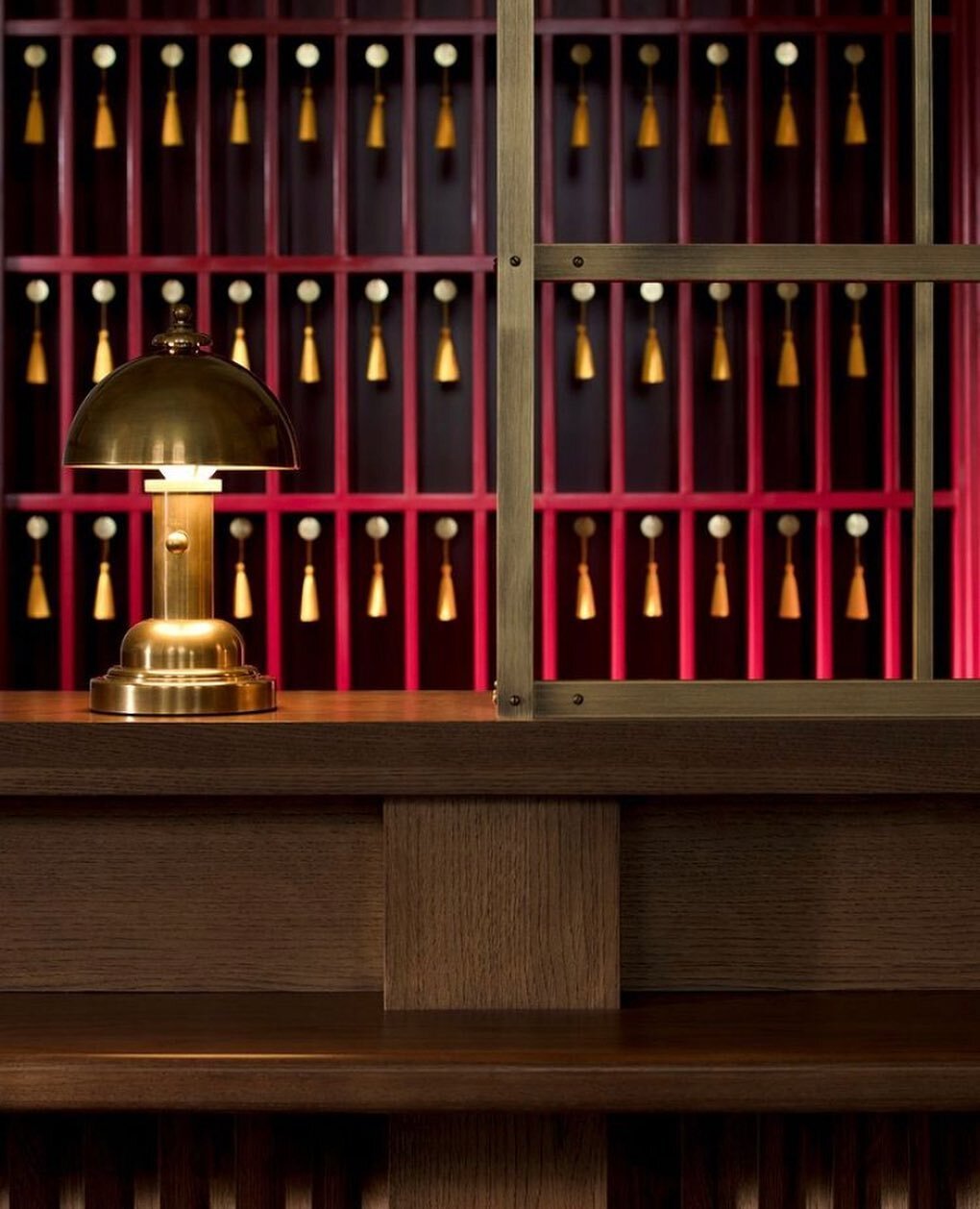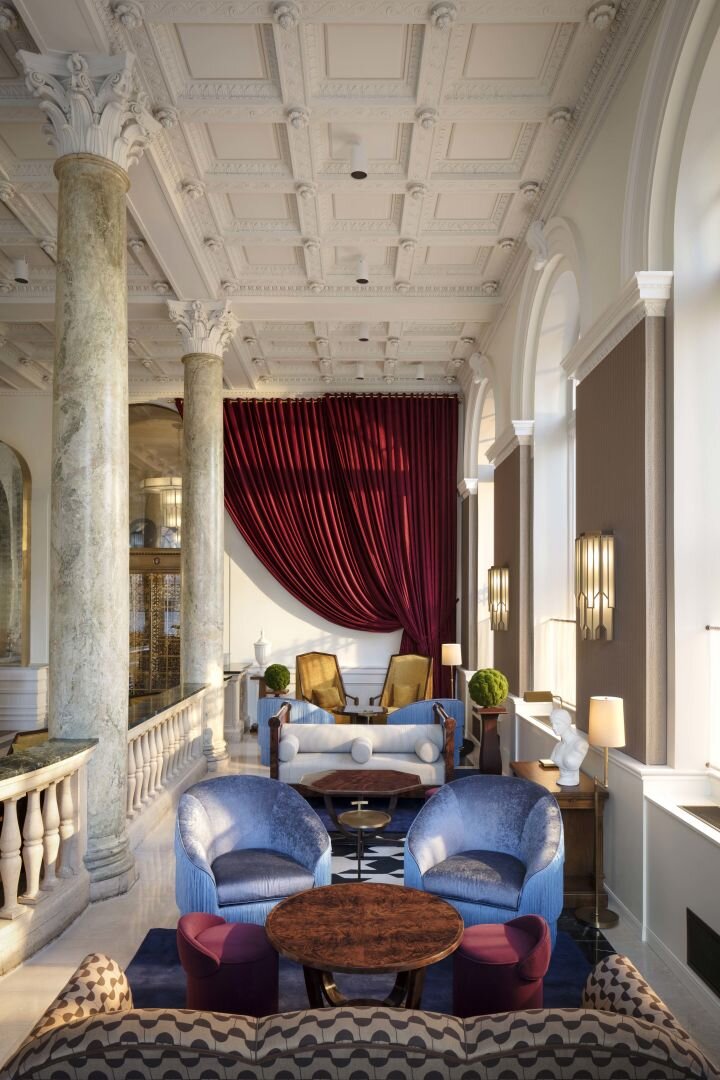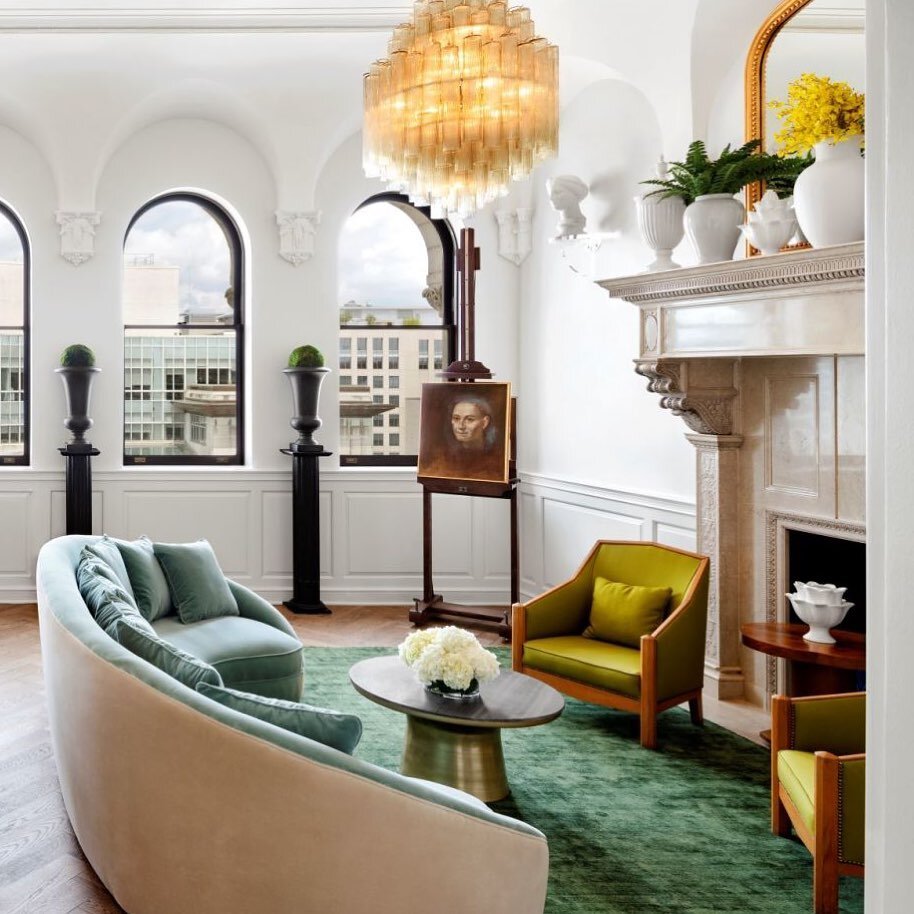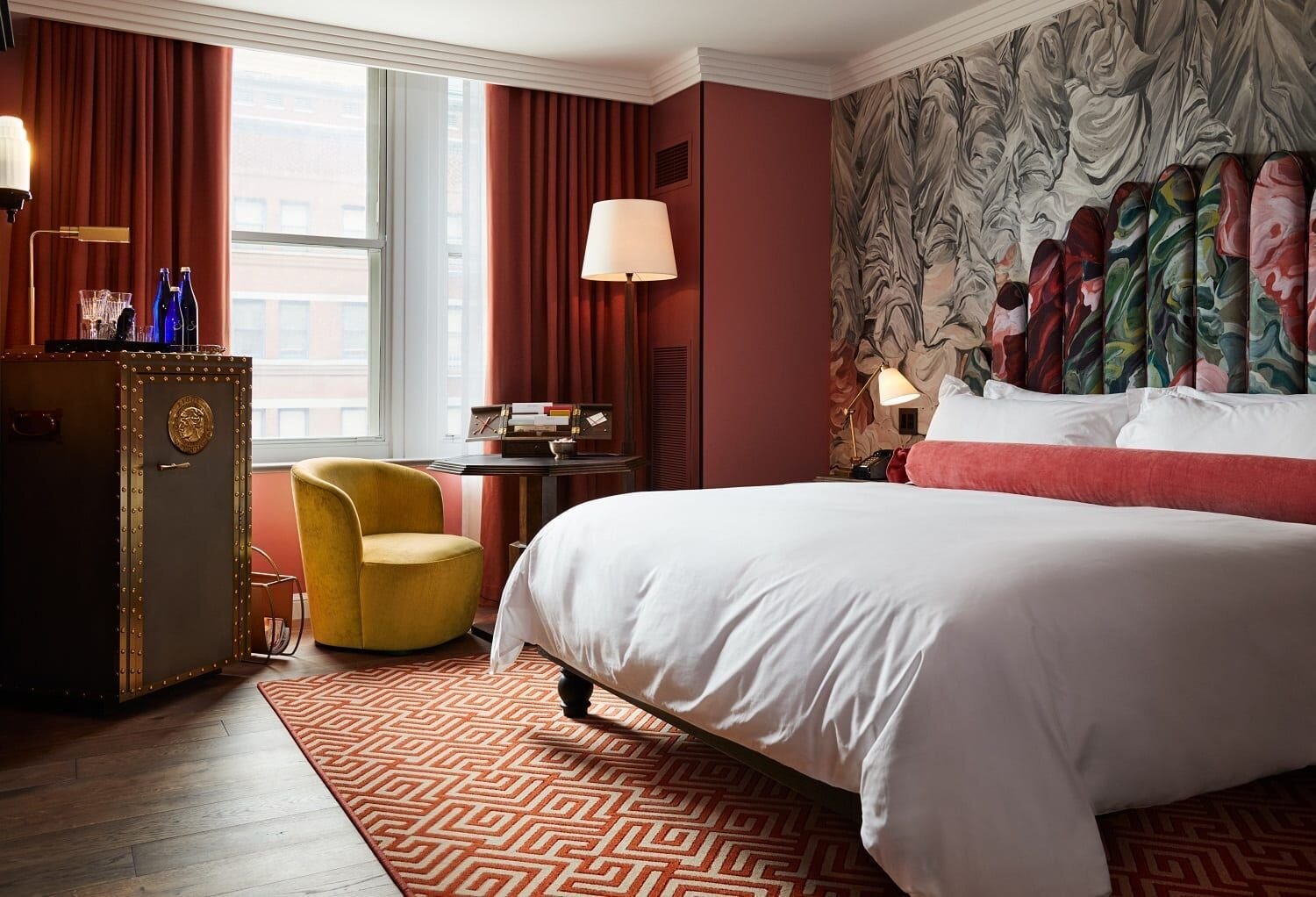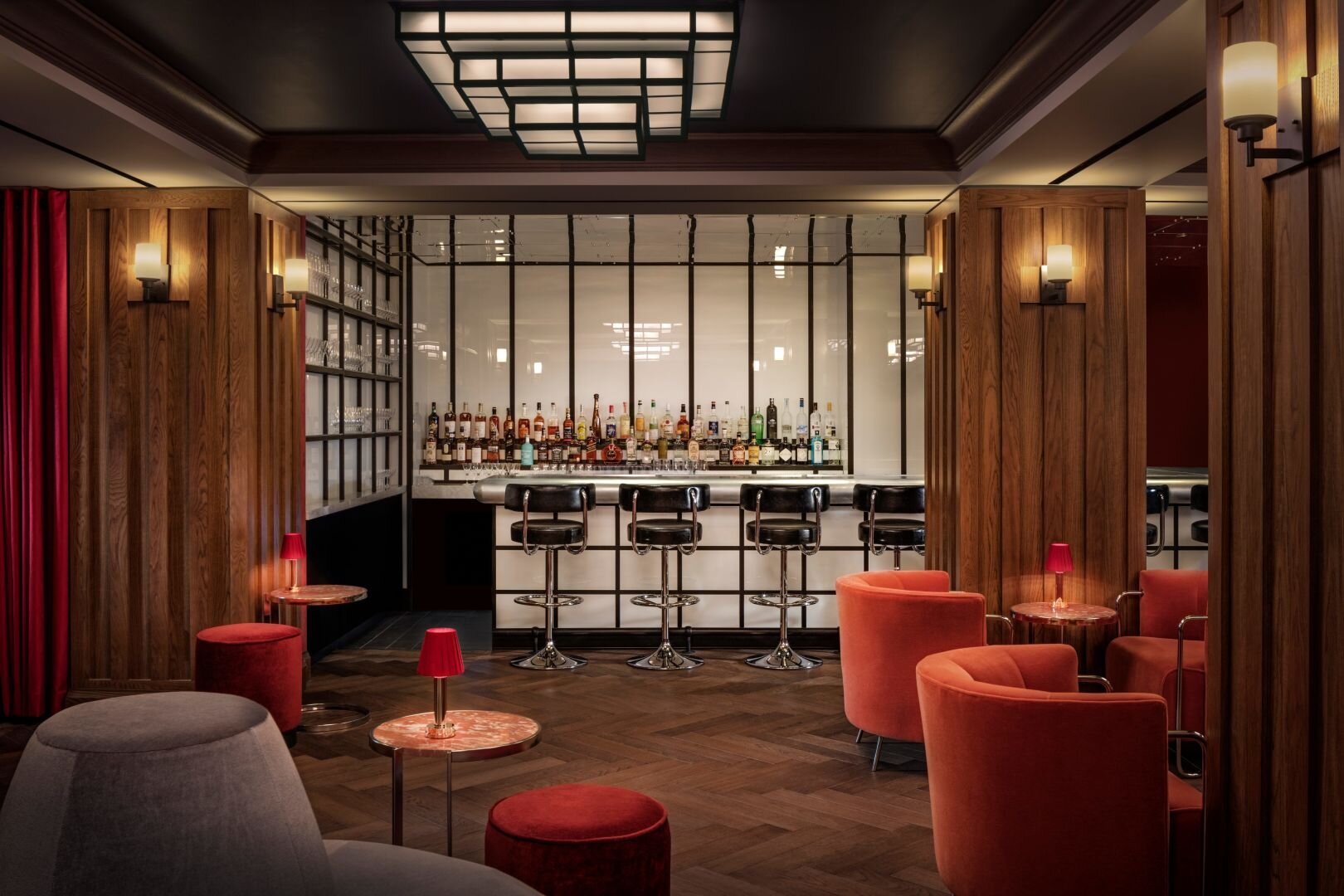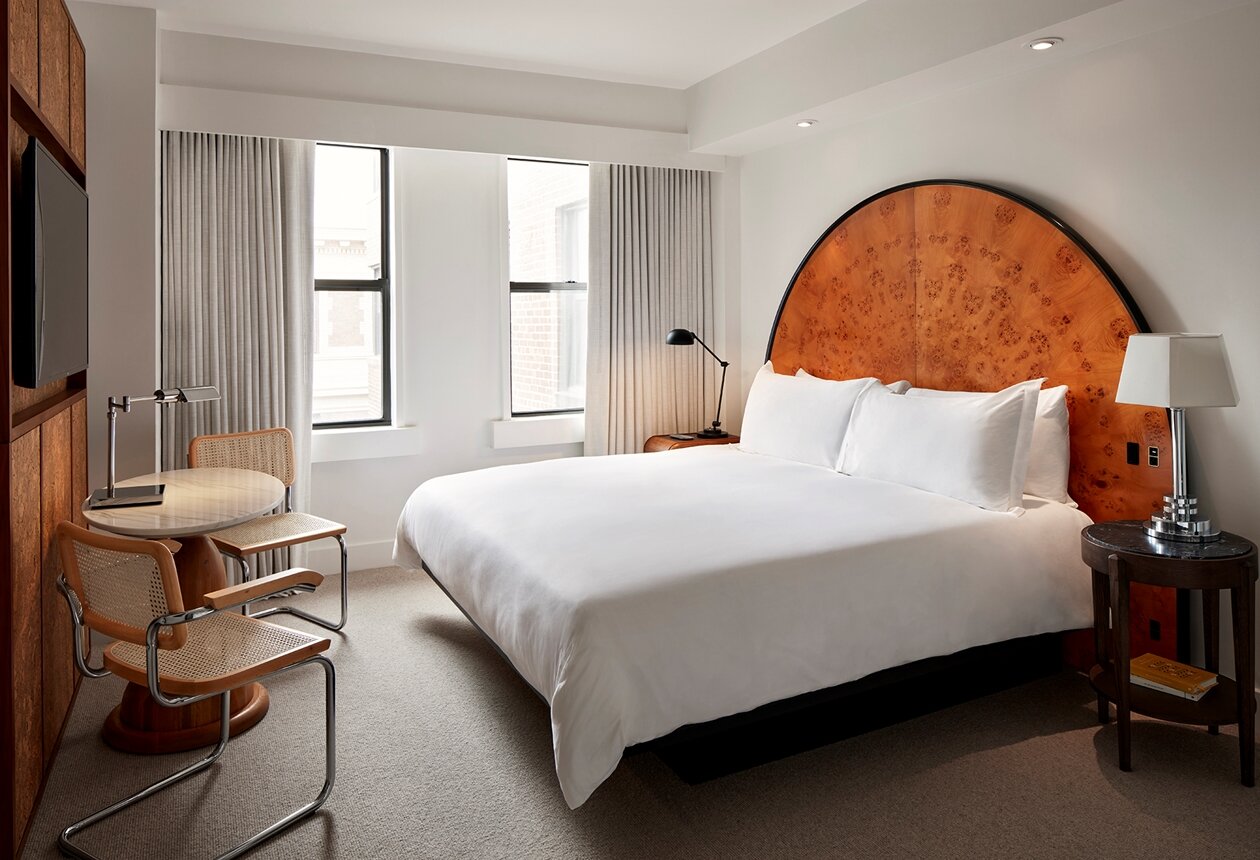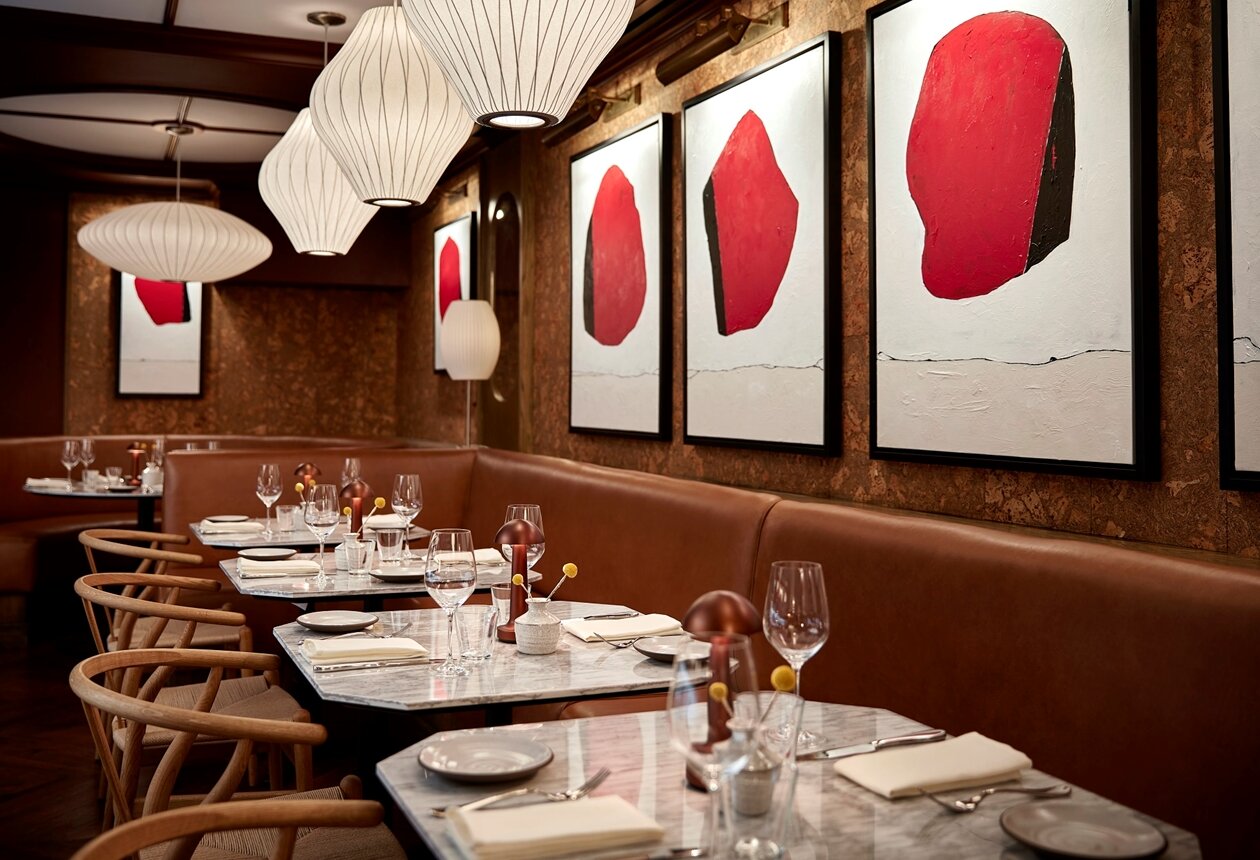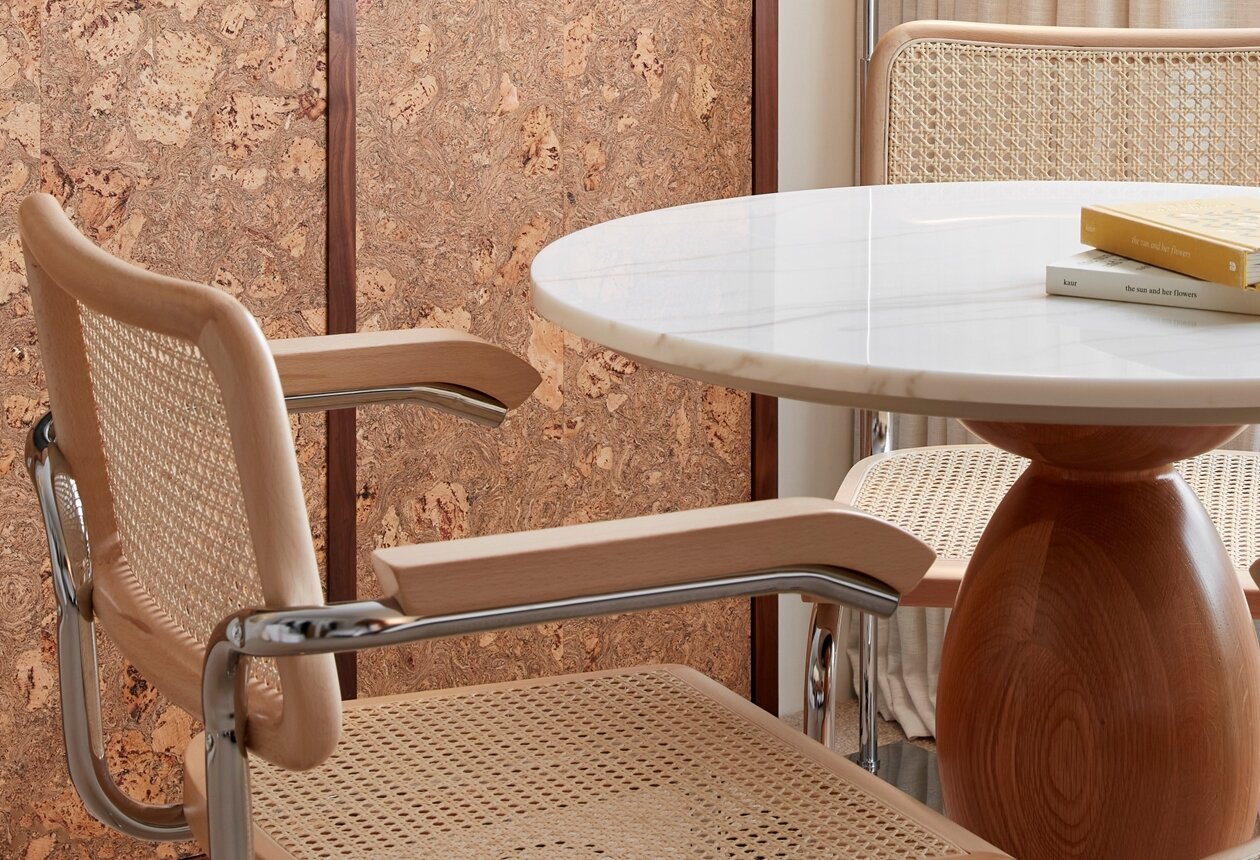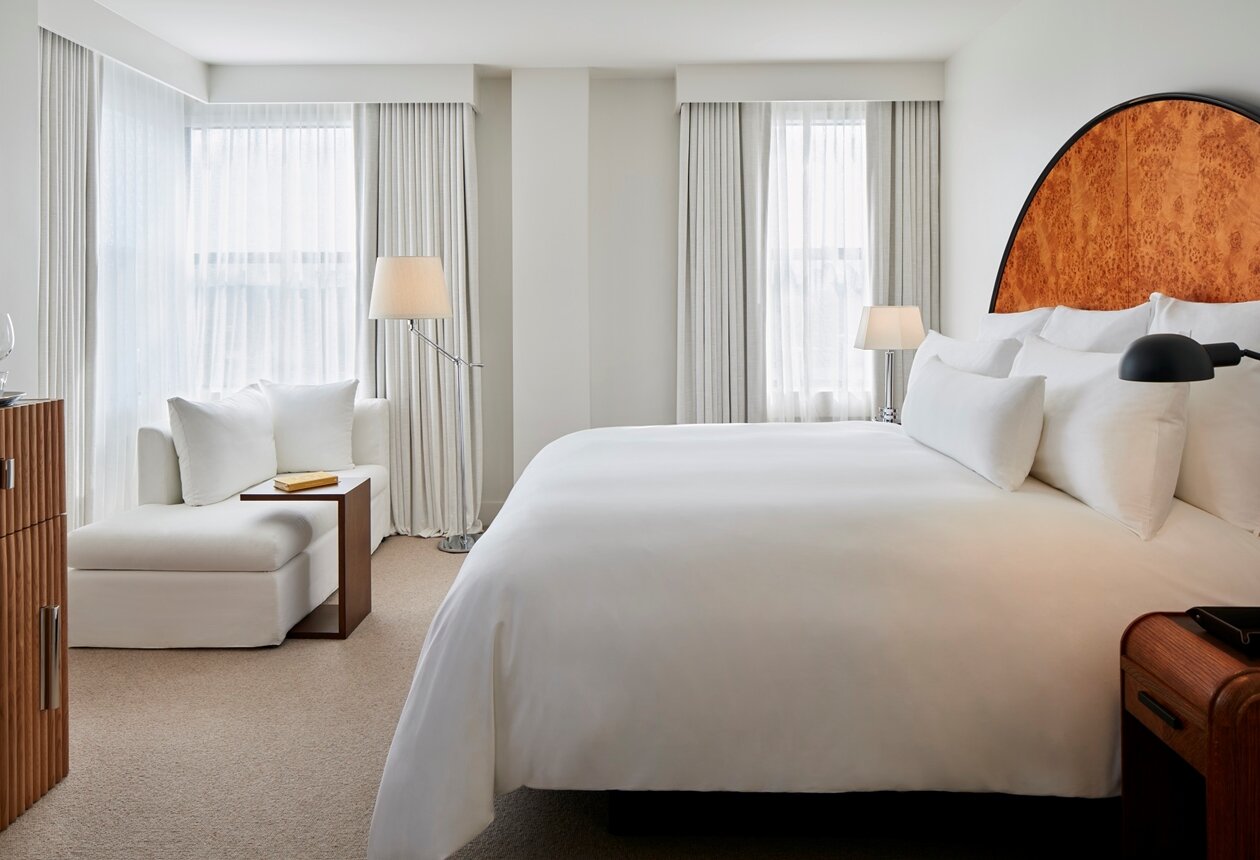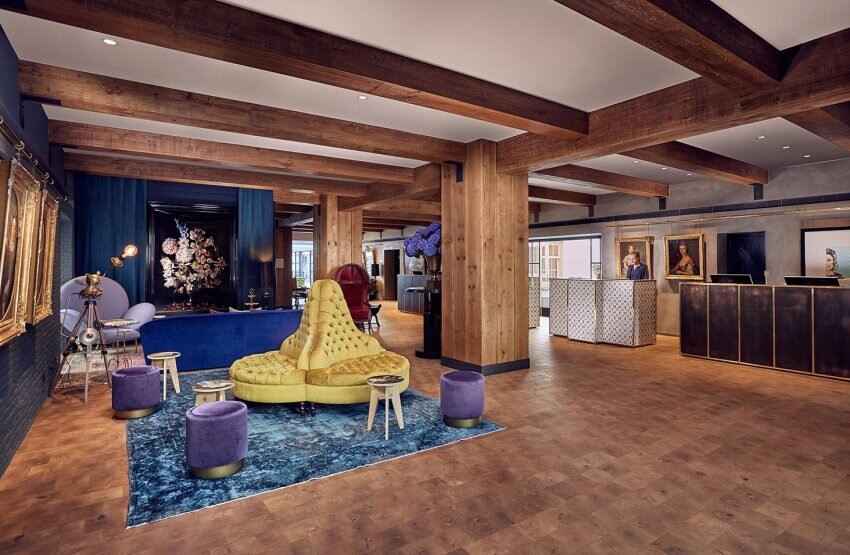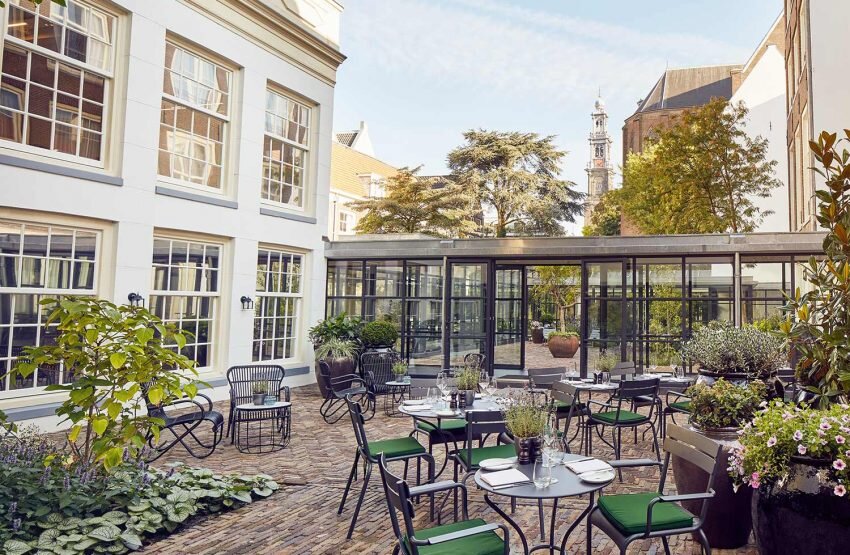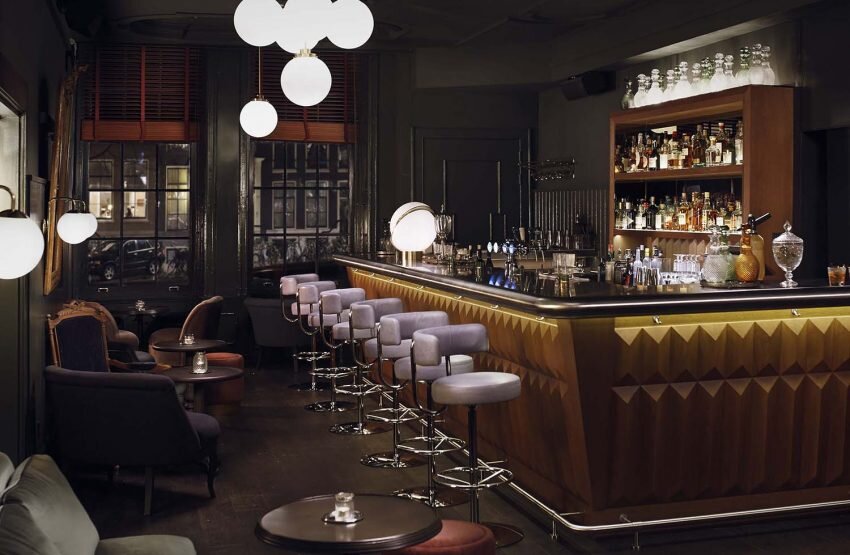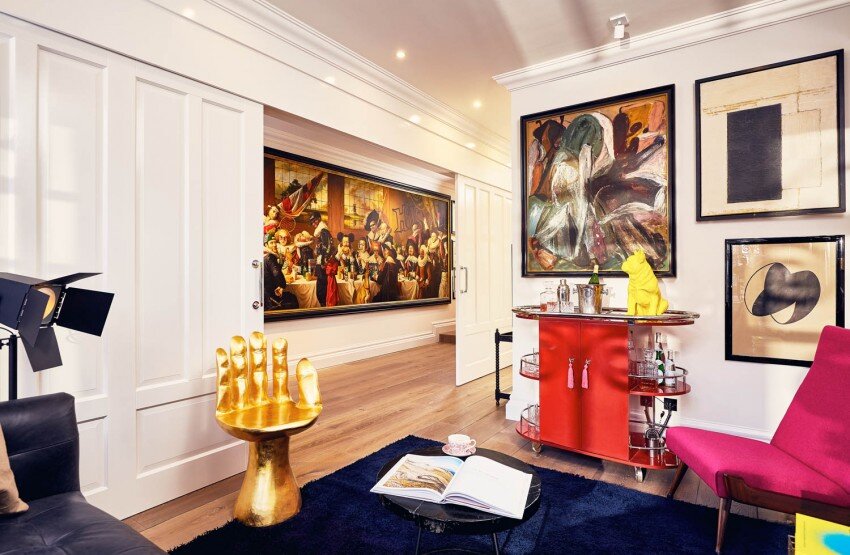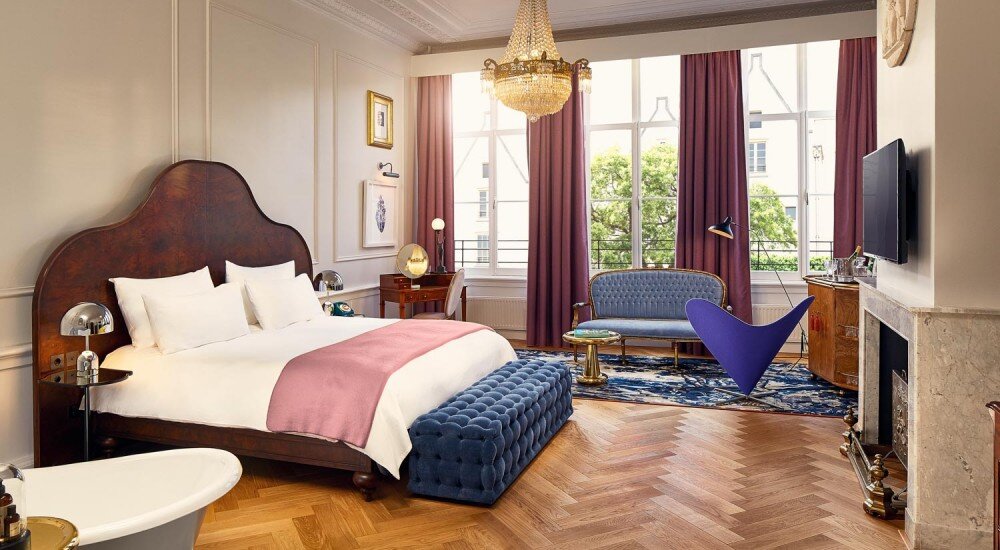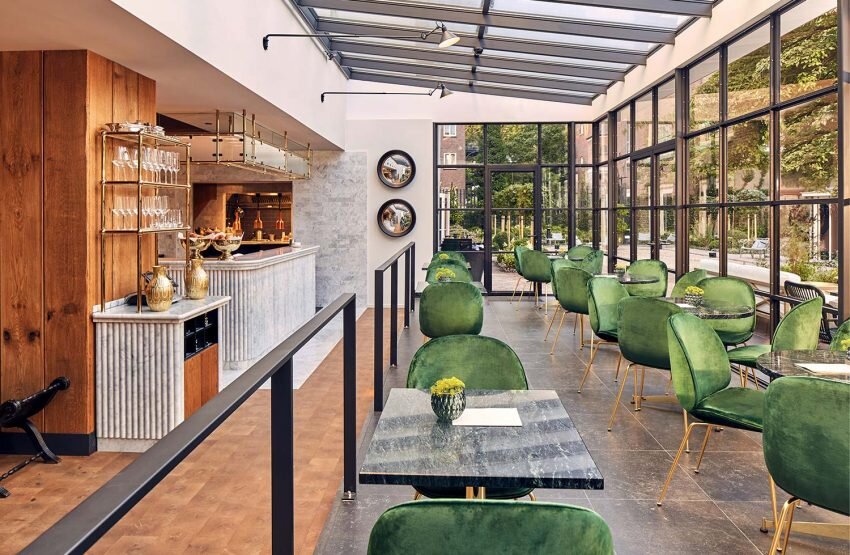Jacu Strauss Spills His Hotel Design Secrets
Jacu Strauss at Riggs, Washington D.C.
C
reative Director Jacu Strauss is sitting in a wingback chair at the Riggs in Washington D.C., Lore Group’s first U.S. hotel. His eyes are smiling and his hands waving around with enthusiasm — no sign of fatigue, despite the fact it’s first thing in the morning and he’s just run from their newest project across town, Lyle, to chat.
It feels like I’m sitting across from Strauss in that room, not dialing in from The Netherlands. He’s got on these red-framed glasses that bring out the colors in the wallpaper behind him, which he tells me are enlarged snippets from Baroque paintings at the Metropolitan Museum of Art, specially made by an American artist for Riggs.
“I always want to make sure that something is modern, and that at the same time, it has longevity,” Strauss tells me as we kick off our conversation. “So it feels relevant today, but, you know, celebrates its history and its heritage as well.”
The title of Creative Director isn’t exactly something that you would expect from a hospitality group, but seems to be part of Lore’s secret to success. Strauss, a trained architect, hailing from London’s Bartlett School of Architecture by way of South Africa, has his hands in just about every facet of Lore Group's projects — from the room designs to the guest journey, branding and communications. His vision, largely, is to give guests an elevated experience — a treat that makes you smile.
“I think the role of Creative Director is to be really good at storytelling,” Jacu smiled. “My role is to create something that, whether it's a guest or whether it's the housekeeping staff, they know exactly what we've done here. The story is very clear and they can tell that story to someone else who will immediately understand exactly what it is as well.”
I’d recently stayed in the Pulitzer Suite here in Amsterdam, one of the many rooms designed by Strauss over the years. This suite is famous here in The Netherlands, and it’s easy to see why. With a gigantic wood headboard and a tub in the middle of the room, it’s totally sumptuous and luxurious — a modern nod to the old world wealth that built this historic building, as well as the eclectic feel of Amsterdam. And let me tell you, I couldn’t stop smiling for the entire stay.
That experience led me to ask Jacu about his ethos, and why he actively strays away from this ‘home away from home’ trend.
“It's a phrase that's being used way too much. And I've seen way too many examples of something that is not what I would consider a ‘home away from home,’” Strauss admitted. “It's almost the same as saying that something is luxurious. It's not really for you to decide and dictate that — it's the guest’s experience, and they decide, because everyone expects something different. It’s the same with luxury, what is luxury to me is very different from what is luxury for someone from Dubai.”
Pulitzer Suite, Pulitzer Hotel, Amsterdam. Cate Misczuk
It’s an important distinction to make as Lore Group launches Lyle, their first hotel to even somewhat embrace this homey feel. Built in a former Art Deco apartment building in the Dupont Circle neighborhood of D.C., Strauss tells us the design leans into this residential heritage but is meant to make you feel like you’re staying at a stylish friend’s or aunt’s house. Think: oversized, untucked comforters, burl wood headboards, rattan seating and Berber carpets for a soft Deco feel.
“Hotels should still be an elevated experience. And again, that's where maybe the confusion with home away from home lies. What you get at home is great, but you should get something a little bit extra when you stay at a hotel,” the Creative Director tells us. “That's my point about it being somewhat of a treat. And sometimes, it even makes you experiment and discover new things. I mean, the room I'm sitting in right now may not be everyone's cup of tea, but someone might be curious enough to take a few things back with them, something they may not have been brave enough to do before.”
“MY INSPIRATION JUST COMES FROM OBSERVING. LIKE PEOPLE WATCHING — THAT’S INSPIRING”
When it comes to inspiration, Jacu says he extracts it from the place itself. The Creative Director even lives somewhat nomadically, transplanting himself into the cities where his projects take him. He spent two years in Amsterdam during the redesign of the Pulitzer, scouting antiques from local markets and quite literally living, eating and breathing local culture he could work into the design. Now he’s in the District of Columbia doing the same.
“My inspiration just comes from observing. Like people watching — that's inspiring. And I can’t really put my finger on how it translates to design, but design is an experience, and you have to see how people live and what they do. And in a new city, you always want to see how people dress, where they go to eat. Because that gives you real insight into how people live. And from that, you start working on how things could come together. I’ll ask myself, ‘How would someone experience this?’ Because how someone experiences this chair in D.C. versus Amsterdam is different — and that’s because of culture and context.”
The only thread that connects his unique designs? Strong storytelling and a dedication to timelessness. “I really only want to design each one of our hotels once. Even though there will always be things to do, I don't want to redesign it every 10 years — that’s also just not sustainable,” Jacu explains. “I think that’s also normally a sign that you did something wrong in the first place. But, you can avoid that mistake by just really trying to understand the context of a place, and that’s what I am committed to doing with these projects.”
IT’S ABOUT CREATING SPACE FOR AN EXPERIENCE, NOT DICTATING ONE
Strauss likes to relate his hotels to an art gallery — he puts it in front of you, and you extract the meaning. While the designs are rooted in place, culture and history, the Creative Director wants each guest to experience something unique, creating their own experience around the design to some degree.
“It’s important to have those moments where people can almost create their own little story, because there's nothing nicer than someone becoming sentimentally attached to something you've done.”
“We want to sort of put it out there, then it's yours to make what you want with it. We don’t dictate what you should experience. We want to design a hotel that feels flexible enough so that people can make their own thing. And you know, that's how we have people who have become fans and come back to our hotels all the time. They respond to things that sometimes I never even anticipate.”
TRENDS, YOU SAY? WHAT ARE THOSE?
If you haven’t gotten the gist, Strauss likes to steer clear of trends. “You know, hotels have always been this kind of cornerstone of communities, and we’re just custodians of these buildings. Riggs, which was a bank long before it was our hotel, belongs to the people of Washington. So we have that level of consciousness. And we don’t do anything for vanity.”
As for shifts in the market, Strauss points out the fact that there’s a new attitude towards unique places and value-added experiences. In light of major market shifts, like the explosion of property rental platforms like Airbnb, he says people experience and appreciate a hotel a lot differently these days.
“Hotel's aren’t just expensive beds to sleep in. You get an experience, but also comfort, security and safety. Someone once told me that if you’re in foreign new city and something goes wrong there’s two places people run — the embassy or their hotel. And that’s powerful. If you need information, comfort, your hotel has it.”
Riggs is a former bank turned hotel by the Lore Group in Washington, D.C.
RAPID FIRE ROUND
WITH JACU STRAUSS
Jacu Strauss working on a flower installation for Cafe Riggs.
That famous Pulitzer Suite, Amsterdam.
What do you look for in a hotel?
“I’m ruined for when it comes to hotels. I look at things differently — I opened a pandora's box. So, I'm totally ruined. So what is really important to me, above all else, is the location. I want to understand the neighborhood and all the activities that go on there.”
Where’s the first place you’re going when travel resumes more normally?
“I always have a top-five list of places I haven’t been to. So when I tick them off, I have to replace them with something else. Right now I am fascinated by this place in Namibia called Kolmanskop, which is this desert town that sort of goes over into these ruins in the sand. It’s very dramatic, and I’d love to photograph it.
I also want to explore Portugal more. But, that’s for different reasons. There are a lot of amazing hotel products coming out of Portugal, especially in terms of wellness and lifestyle. There are also some great new furniture manufacturers there. So design-wise, I think there are quite a few things happening there. Portugal has always had this kind of understated thing, you know, when you compare it to Italy, for example. But there is a lot happening there at the moment, and it’s on my radar.”
If you could choose any location in the world for your next hotel project, where would it be?
“I really would love to do hotels in New York and Paris. They’re big primary hotel markets and I think Lore Group has proven we can do this. Paris would be really amazing because, you know, Paris is the home of hospitality. And New York is extraordinary because it's such an energetic city with amazing architecture. Of course, we have an office in New York anyway, so it only makes sense for us to have a hotel there, too.
But what I often say is that these properties come to us rather than us finding them. So we have to be patient and we can’t force anything. There’s one thing I want to make sure we never do, and that’s just do a hotel for the sake of it. We only want to do things for the right reasons.”


